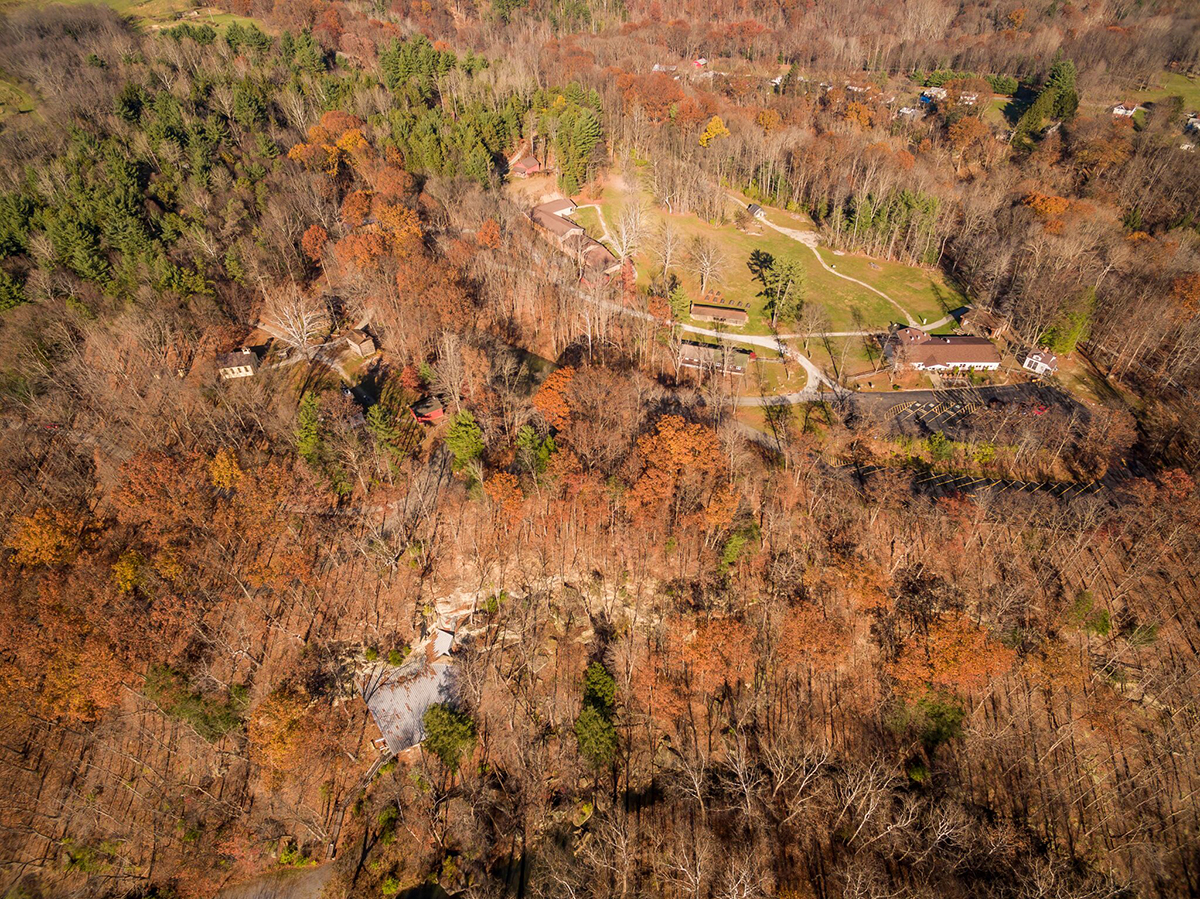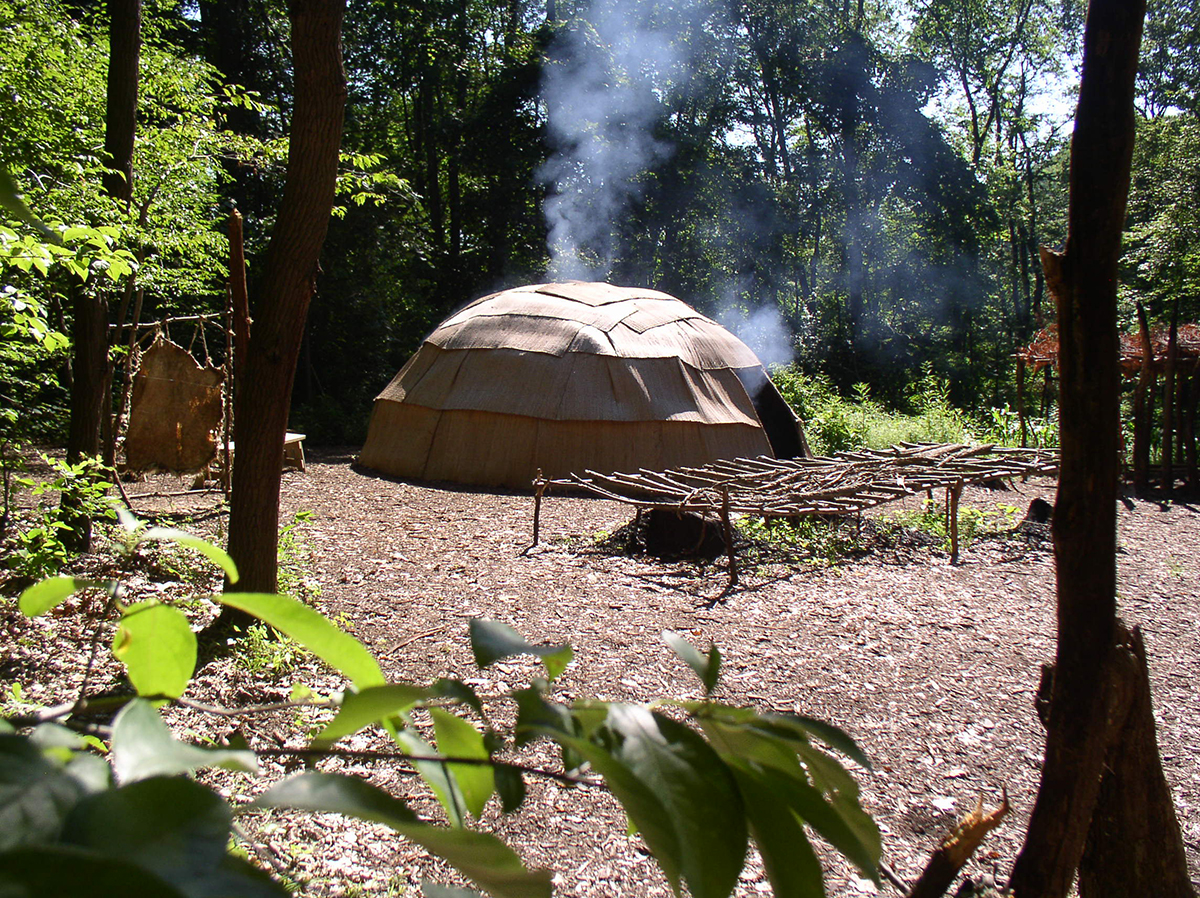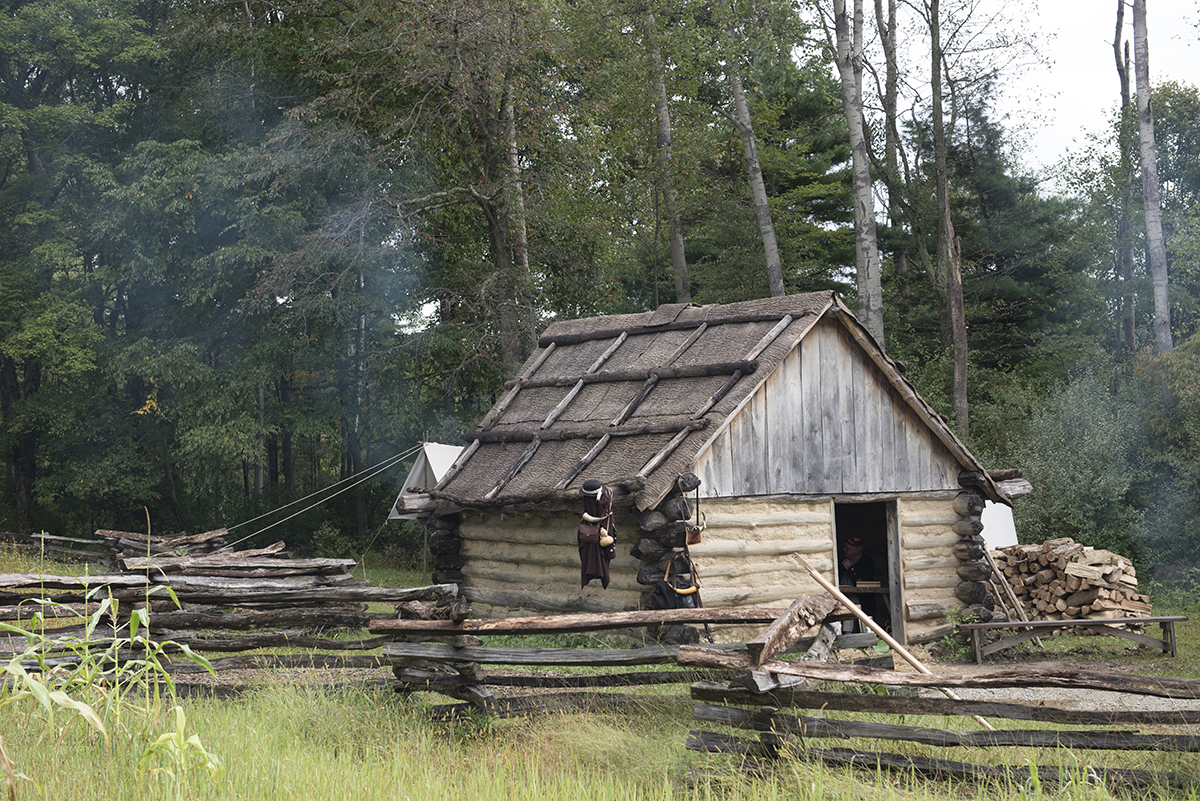Something we often hear from first-time visitors is that they had no idea that there was so much to do here at Meadowcroft. We are a museum that tells the story of humans using the natural resources of Cross Creek Valley for roughly 16,000 radiocarbon years (ca. 19,000 calendar years). With such an exhaustive timespan covered, of course there is plenty to do! The full Meadowcroft experience is a journey through time that presents snapshots of the major cultural changes in western Pennsylvania.

The must-see of Meadowcroft is our archaeological site – the world renowned Meadowcroft Rockshelter. Simply put, while visiting the Rockshelter, you are standing where people stood 19,000 years earlier. Looking down into the deep hole (we’ll explain where that is when you get here) you are seeing the living surface of about 13,500 years ago. The cultural remains found under that large overhanging piece of sandstone remain the longest cultural sequence of the northeastern United States.

Our 16th-century Monongahela Indian Village explores the lives of the mysterious Monongahela Indians who inhabited western Pennsylvania, northern West Virginia, and eastern Ohio during the late prehistoric period from approximately 900-1635 C.E. The Agricultural Revolution that took place during this period had a profound impact on native culture as prehistoric farmers began to raise huge amounts of corns, beans, and squash that allowed populations to grow and village lifestyles to develop. Our Monongahela Village is also one of the few spots within easy driving distance from Pittsburgh where you can try using an atlatl, a prehistoric spear-thrower, to throw a 6-foot dart.
At the 1770 Frontier Trading Post, visitors can learn about the many challenges both Native people and European settlers faced as their cultures came together. The 18th century saw the beginning of the Commercial Revolution in our region as trade goods such as iron tools, textiles, and jewelry were brought to the frontier and furs and skins were taken out to feed the growing markets of Europe. This new economy and the close interaction between Natives and Europeans created a distinctly American frontier culture that you can learn about during your visit.
The Industrial Revolution and ever growing cities changed life dramatically for people in the 19th century. The age of homespun goods was gone, replaced by a new age of mass-produced, store-bought goods. Despite the changes and upheavals of factorization, northwestern Washington County remained a series of dispersed rural communities, each oddly self-sufficient, yet inextricably linked to the modernizing world. Today, visitors can get historically educated with a lesson in a one-room schoolhouse, watch a blacksmith forge red-hot iron, and battle it out among your family by playing historic games.
A day trip to Meadowcroft is a deep dive into thousands of years of regional history. Stop by and start exploring during the 2019 season, which begins on Saturday, May 4.
Andrew Donovan is the education and program manager at Meadowcroft Rockshelter and Historic Village.

